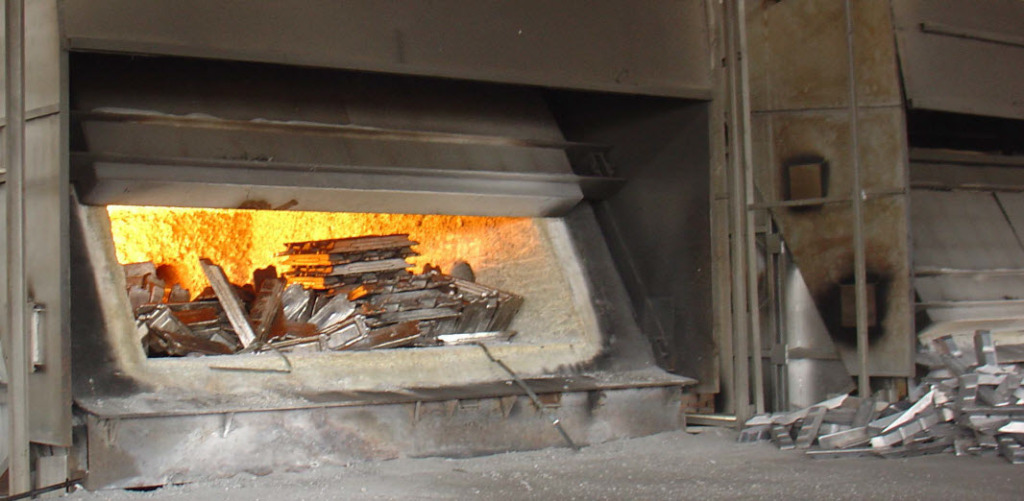Choosing the Best Refractory Material for an Aluminum Furnace
 For our aluminum customers and prospects (primary, secondary, smelters) we’re frequently asked a new, but old, question, “What is the best refractory material for an aluminum furnace?”
For our aluminum customers and prospects (primary, secondary, smelters) we’re frequently asked a new, but old, question, “What is the best refractory material for an aluminum furnace?”
With over 68 years of experience, we’ve worked with all of the prominent manufacturers for aluminum resistant materials, not to mention the first-hand knowledge of how these products perform “in the field” which is really where it counts!
We all know refractory is engineered to contain molten aluminum, but which material is best? Well, that depends.
There are several tests that are useful and these are addressed below; however, the answer is subjective and honestly depends on many variables. Are we talking corrosion resistant/below the metal line, at the metal line (belly-band), upper walls/roof or sills and ramps?
For example, a material that performs well in corrosion resistance (below the metal line) is usually very dense with low porosity. This type material usually has poor thermal shock properties. Plus many of the additives used in corrosion testing have temperature limits which may preclude their use at and above the metal line where temperatures are higher. The corundum growth, mechanical abuse and fluxes make this an even more difficult problem.
What are the expectations? What is the budget? What are the operational factors? What are the specific “problem” areas?
Use Tests to Work Through the Variables
There are many contributing factors that go into determining “the best” material: furnace cycle, metal throughput, temperatures, alloy, fluxes, cleaning/maintenance procedures, aluminum alloy, aluminum supply, combustion and combustion by-products to name a few. These are all important.
Although the initial answer may come from the molten aluminum test, it may require multiple tests.
There are three (3) generally accepted molten aluminum test methods for evaluating refractories for use in aluminum furnaces, but remember these primarily address corrosion:
- The “Cup Test” (originally developed by ALCOA)
- The “Immersion” test
- Test Furnace Method
The Cup Test
The standard ALCOA cup test is run at 1700ºF for exactly 72 hours with 7075 alloy aluminum.
- This temperature is chosen because the aluminum is very fluid and active.
- This alloy is chosen because it has been historically a very corrosive alloy with high magnesium and zinc which allows for several reactions.
- Any reaction will generally occur within 72 hours.
The standard cup test was designed to simulate actual furnace loading practice. A “cup” is cast from the chosen refractory material. The refractory cup is pre-fired and the molten aluminum added. This assures direct contact with the refractory. There are several variations of the cup test that can be run based on your aluminum alloy to “zero-in” on a suitable refractory.
The Immersion Test
The second method is the “Immersion” test. This test can be run at variable temperatures/time. ALCOA’s standard is 1700F for 7 days, ALCAN’s standard is 850C for 96 hours. As the name suggests the refractory is “immersed” in a bath of molten aluminum alloy.
The Test Furnace
The final method is a test furnace lined with various refractories. The furnace may be only a few cubic feet in capacity. As you can imagine, this is rather expensive compared to the other two tests. This type of test is usually carried out over several weeks or even months. Again, the temperature and alloy may vary to simulate actual field conditions.
Regardless of the test method, the results are analyzed in the same manner, that is, the amount of penetration and degree of reaction with the refractory. Each of these tests has its merits and drawbacks. For most the cup test is quick, simple and effective. The immersion and furnace test are larger, more complex and costlier. They require maintaining a molten bath and this is a major drawback; however, many aluminum producers prefer these two methods for final approval of a new refractory material or change in furnace design.
Test Results + Field Experience for the Best Results
The above tests are good for materials below the metal line where corrosion is the main concern; however, they may not be as good for what goes on above the metal line.
The furnace conditions at and above the metal line are more complex and more difficult to address. Temperatures are elevated. Thermal shock must be considered as well as corundum growth and operational factors.
Last, there are researchers developing tests for this area but most of these tests are not yet proven, add complexity to the test itself and increase the difficulty to recreate results.
Currently it is our opinion that it’s better to look at multiple tests along with field experience to find materials that perform well in several environments as opposed to testing for one attribute which can be expensive and not meet your overall expectations.
If you’re considering new materials for your furnace or have questions about what is currently in your furnace, give us a call. We’d be glad to help.
Comments are closed.

